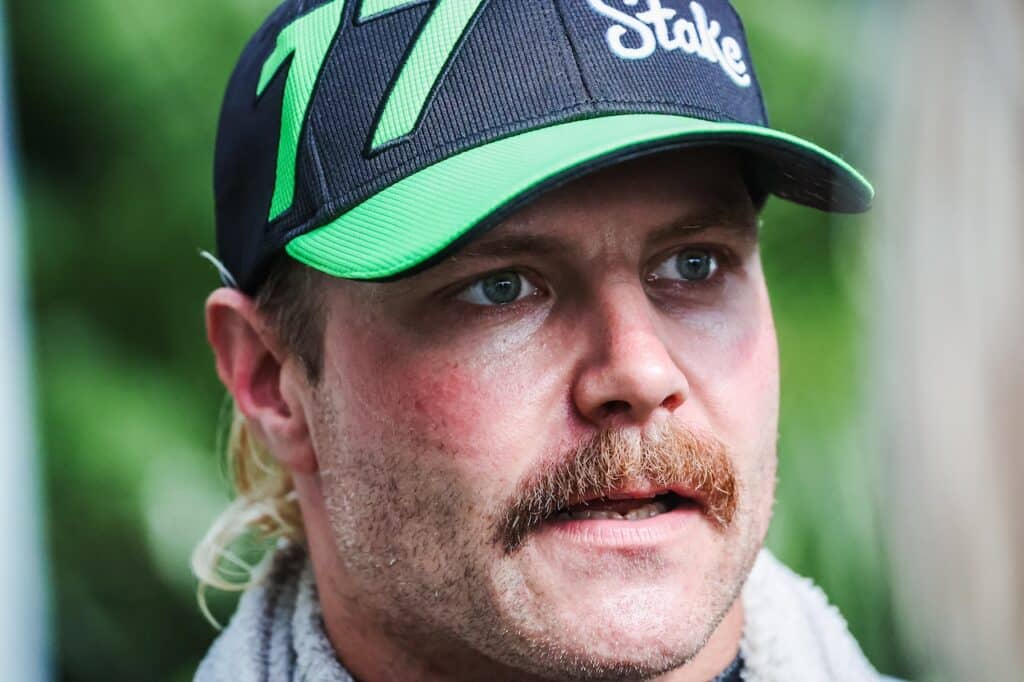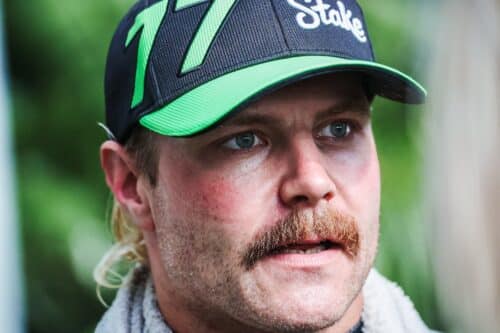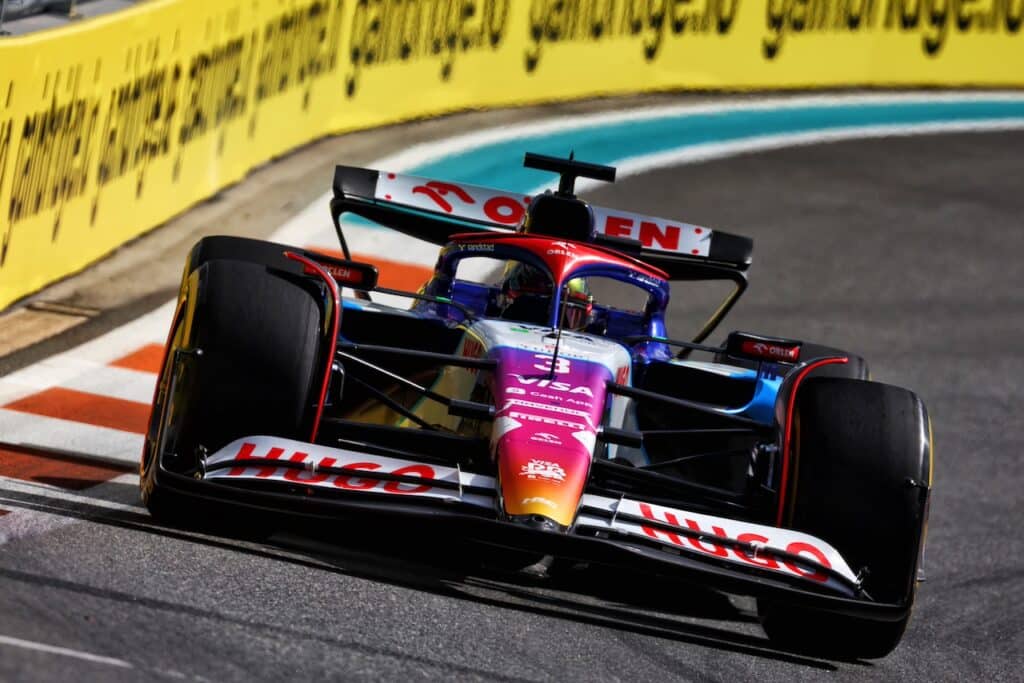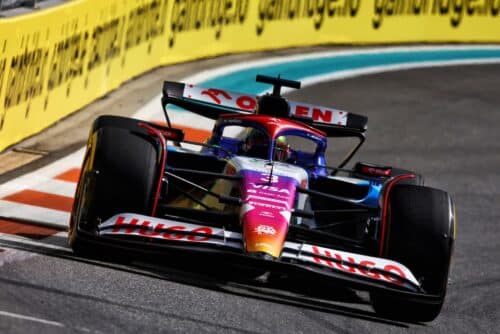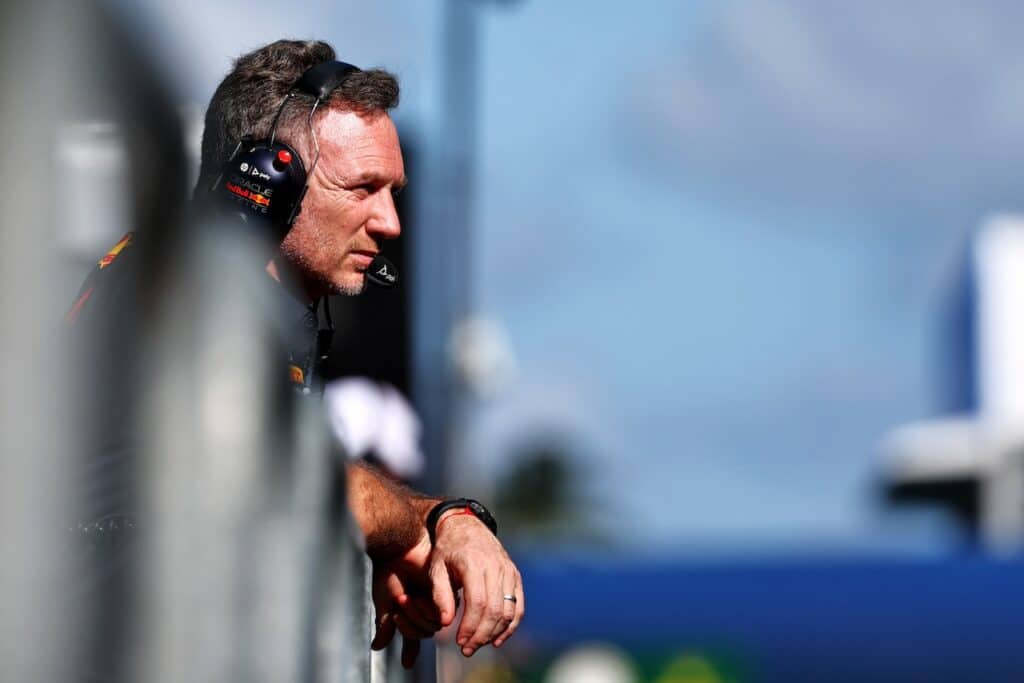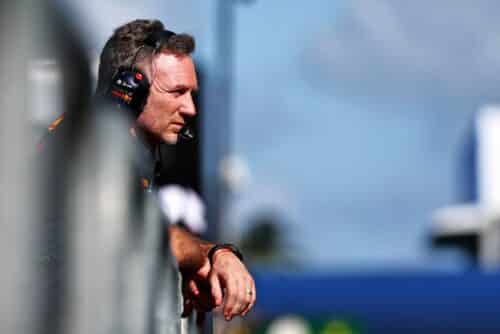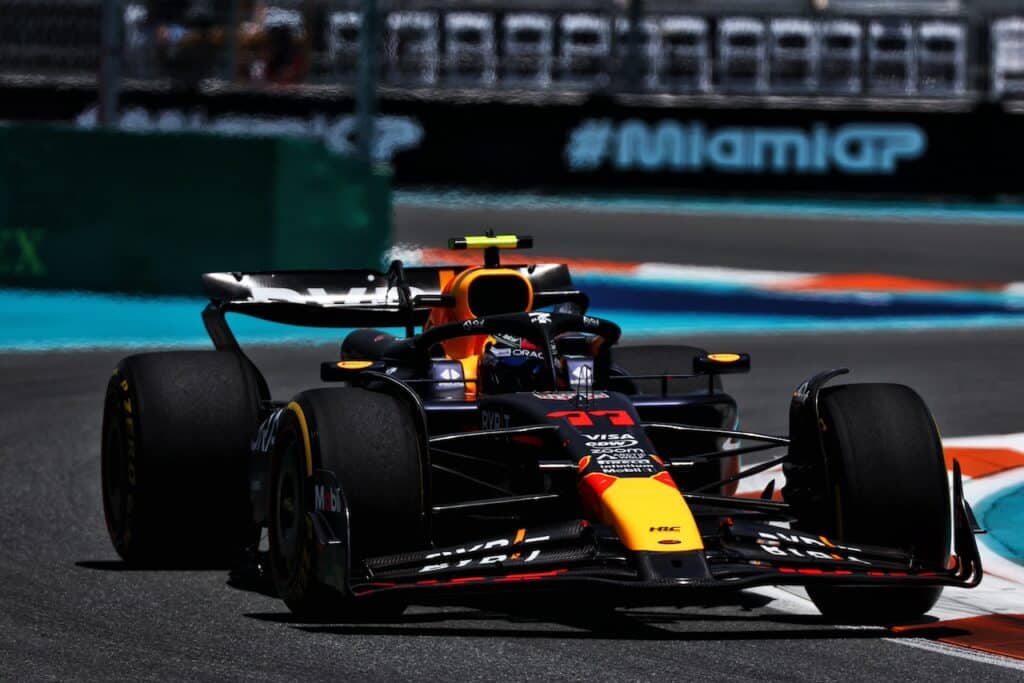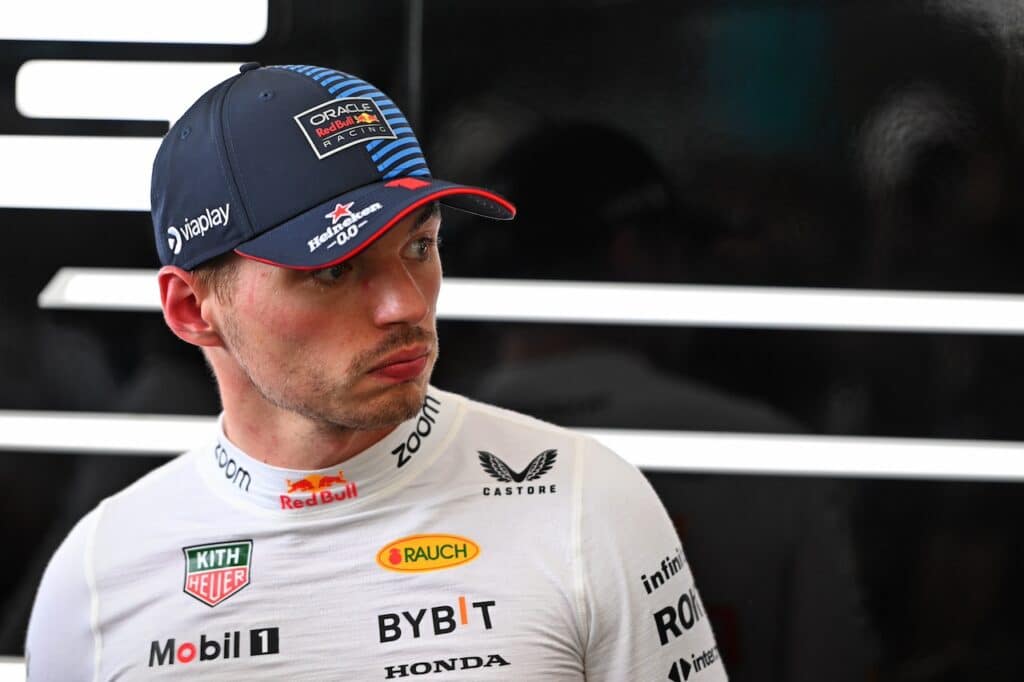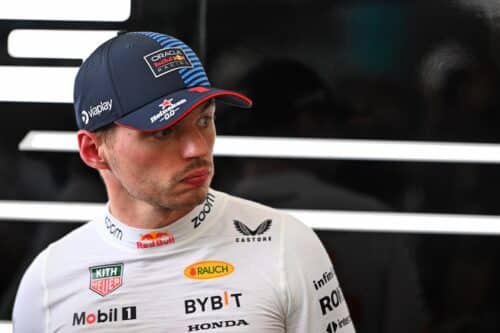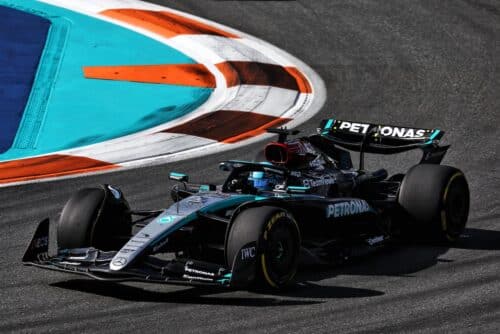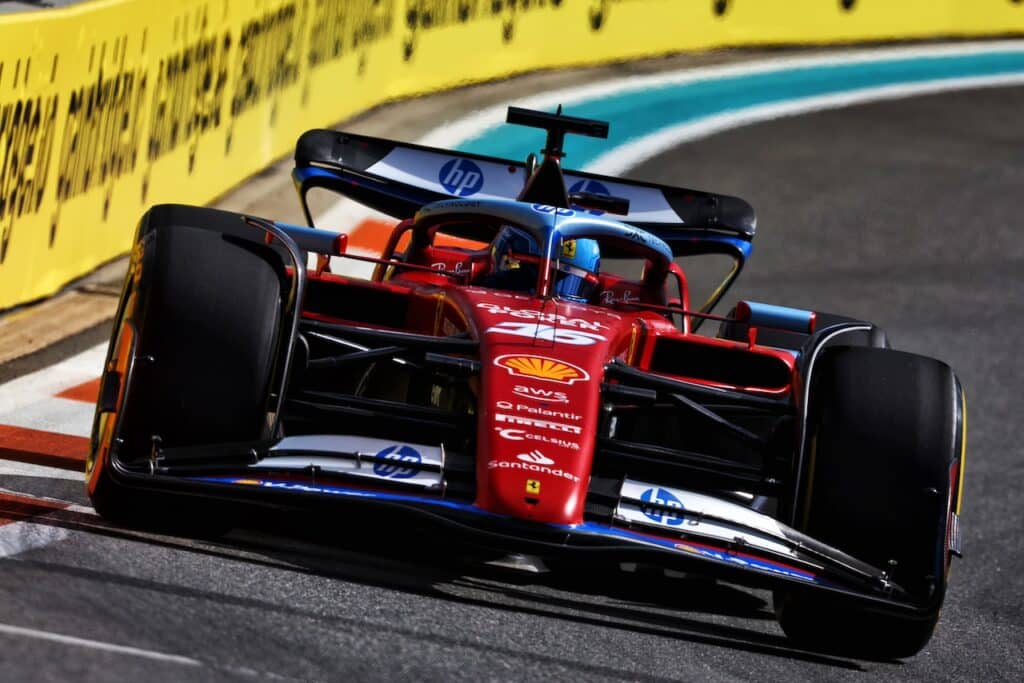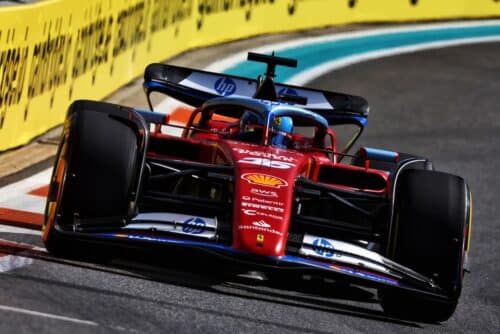F1 | GP Brazil: the analysis of the sprint race
Russell wins the sprint race ahead of Sainz and Hamilton, Verstappen with the average slips to fourth place

The last time two Mercedes monopolized the front row of a starting grid dates back to the 2021 Saudi Arabian Grand Prix, almost a year ago. A long wait peppered with setbacks and doubts, but also with constant technical growth, which after a subdued start to the season has brought the Brackley team back to fighting for the podium positions with a certain consistency.
An exploit gained thanks to George Russell's first success and the excellent third place of Lewis Hamilton, who will advance one place thanks to Carlos Sainz's penalty for replacing the combustion engine. In the twenty-four laps of the sprint race, the two Silver Arrows impressed both in terms of performance and consistency, overturning those negative feelings that a Friday had left difficult to decipher, especially for the seven-time world champion. Many set-up tests, wing changes, and aerodynamic refinements, but the result was always the same: both in the heat and in the cold, Hamilton highlighted a lack of grip which in qualifying then materialized with a disappointing eighth place. Much more convincing were the indications provided by Russell, who had found himself more at ease with the Brazilian-style W13 since the early stages of FP1.
However, it is fair to suggest that probably few would have bet on a Mercedes in the lead after the sprint race, even though some elements played a central role. First and foremost, undoubtedly the difficulties of a Red Bull who suffered from thermal degradation of the tires and a lack of grip on both axles, as had already been highlighted on Friday morning in the first free practice session. Secondly, the starting position also helped: if Sainz had not started from fifth place but from third, for example, we would probably have seen a different race, because at that point it would have been the Spaniard who had the opportunity to attack Verstappen first and impose his own pace over a short distance. On the contrary, the excellent performance recorded on Friday had put Russell in a position to launch the attack already in the early stages of the race, thus protecting himself from a return from the Spaniard.
If we observe the first half of the race, in fact, it emerges that the Briton had attempted the maneuver on three or four occasions, but without finding that opening to insert himself and definitively gain the position. As long as the performance gap still allowed him to defend himself, the two-time world champion did not back down from the fight, arriving several times to protect the leadership with extreme braking. But for the standard-bearer from King's Lynn, continuing to try was fundamental, also because the longer the duel continued, the more Verstappen would have had the opportunity - on paper - to play on the greater flexibility offered by the media. “We were confident we could finish second and we thought Max would have an easy time, to be honest. We knew that if we weren't ahead of him at turn one, it would be very difficult to stay ahead of him. I started attacking in the first laps. And I thought that once he got to tire temperature, he would go away. And it was a little difficult. You had to balance risk and reward,” the Silver Star driver explained in interviews.
Behind them, the Ferrarista was vigilantly waiting as the third supporting actor, keeping his distance so as not to damage his tires but ready to exploit any opportunity to make his move. The problem is that when Russell gained the lead of the race, the Spaniard from the Rossa then needed another four laps to be able to complete the same maneuver on Verstappen, increasing the gap from the leader from two to four seconds in the space of a few kilometres.
Although the Mercedes simulations already highlighted how degradation should not have been a problem over such a short race distance, that little treasure had provided the opportunity to manage the final steps with greater serenity, managing the advantage. "It was amazing. I didn't expect to have such good pace, but I think it shows the hard work that everyone is putting in and the progress that we, as a team, have made in these last three races after Austin. The car and the feeling were excellent. Obviously it's difficult to know what Max's race would have been if he had been on the softs. Still, it's a great feeling to be here,” Russell added.
His teammate, Lewis Hamilton, also echoes him, author of an excellent comeback after a subdued Friday. At the start of the seventh round, the Englishman had already been able to recover to fourth place, even though he found himself almost two and a half seconds away from the virtual podium. Verstappen's high pace, due not only to the choice of tires but also to the fight to maintain the lead of the race, had however given the seven-time world champion the opportunity to close the gap, returning to the DRS zone on Sainz only six steps later. Of course, having the pace to push is one thing, having the pace to overtake is another, especially keeping in mind that on several occasions the Ferrarista could rely on the slipstream offered by the duo at the top of the standings.
Furthermore, once he overtook a Verstappen in difficulty, reasonably risking to attempt the attack on Sainz would not have made much sense, given that he would have gained the position anyway due to the latter's penalty, but the sprint race still represents a good ground for trial. An unexpected performance, as Lewis himself explained, but which leaves positive feelings for tomorrow: “No [we didn't expect to have such a competitive car]. I think we go to these different races, we get in the car and I think both George and I don't really know what to expect. And sometimes even the engineers don't know it, they say "it should be fine here" and then it isn't. So they are even cautious when they tell us whether we will do well or not. However, our race pace was particularly strong today.” An element that emerges from Saturday's test is also the W13's ability to attack the curbs without excessively breaking down the car, an aspect that at the beginning of the season seemed almost utopian, demonstrating the progress made during the championship.
Between the two Silver Arrows a Red spot was inserted, that of Carlos Sainz, who was good at building a solid race and a deserved second place, which however would turn into a seventh place after the penalty. Net of this, the Brazilian Saturday provided important indications for Ferrari, finally protagonist of a convincing performance after a few weekends in which there had been more shadows than lights. Of course, it is too early to draw conclusions and draw a line, twenty-four rounds offer only a partial vision of a race that has had many twists and turns. Various elements influenced the conduct of the race, making it difficult to fully understand the potential of the cars in clean air, but the best indications come from the satisfaction of the drivers, happy with the balance of the F1-75 on the Interlagos track.
The aggressiveness in overtaking against Verstappen is the postcard of a growing Sainz, who after a season full of ups and downs is finally rediscovering the confidence in the car that he had lacked in the first half of the championship. Sensations that the Madrilenian himself, on the wave of enthusiasm, confirmed via radio at the end of the sprint with that “I'm driving well now, I can manage this car well, in duels, in everything. A little late, but better late than never." An injection of confidence also aimed at what could happen tomorrow, for when the Ferrari driver is aware that recovering will not be easy, especially if Red Bull proves to be in good shape: "Usually we have a little more degradation than the Mercedes and I saw them pushing . I managed to gain all the positions at the beginning or in the first two laps, getting into battle with Max and George. I had to be aggressive because obviously I'll get the penalty tomorrow and in the end I think second position was the best today. I am satisfied with the race. I'm happy with the pace. It's just that the Mercedes seem to have increased the pace a lot recently and are very fast in the race."
Thanks to the penalty, Carlos will now be forced to start from seventh on the grid, two positions behind his teammate. For the Monegasque it wasn't the most exciting race ever, thanks to the disappointing qualifying on Friday which left him in the middle of the group. The key element was the time lost in overtaking, especially on Lando Norris and Kevin Magnussen: if nine laps were enough for the Perez-Hamilton duo, who started immediately in front of them, to overtake the midfield drivers, Leclerc had taken six more, then finding themselves in no man's land.
Too far away to think of rejoining the leading riders before the checkered flag, but also too fast to be worried by the riders behind him. A race marked by prudence, well aware that what counts is not the sprint, but the race on Sunday: observing the pace maintained once he reached free air, the Ferrari driver was able to maintain the pace of the leaders, catching up even over three seconds to the Mexican of Red Bull. Although there are many variables to take into consideration, this is still an encouraging sign for the Red team, although moving up from the third row will be a difficult task, especially keeping in mind the speed gap on the straights also highlighted in Brazil. “Starting from the tenth position, today for me the objective was to recover as many positions as possible without taking too many risks. This is what we managed to do and thanks to the good pace shown today, I will push hard tomorrow to bring the team a significant result", explained the Monegasque.
If Ferrari and Mercedes ended their Saturday with a smile, the same cannot be said for Red Bull, far from the levels admired in previous events. The choice to line up Verstappen on the medium was surprising, also because the Milton Keynes team had never used this compound in the two free practice sessions, concentrating on the soft and hard. Indeed, on the contrary, it was the only team to have carried out a long run on the softer compound on Friday morning, also highlighting very positive results in terms of consumption. Sensations then confirmed also the following day, when in FP2 they proposed a similar program with convincing times. It is unlikely to think that the technicians of the Anglo-Austrian team could have been frightened by the possible degradation, because if it had not been evident when the asphalt had reached peaks of 50°C, realistically it would not have recurred even during the sprint, with significantly lower temperatures . Furthermore, many of those drivers who had tested the yellow band tire on Saturday were not particularly satisfied with it, including Leclerc, who did not hesitate to make the pits understand that that compound was not providing the desired feedback. It is no coincidence, in fact, that almost everyone decided to line up on the grid with the softest tyre, aware that it could have taken them to the finish line without major difficulties.
A possible explanation is that Red Bull thought more on a tactical level in view of Sunday's race than the sprint, dropping an average on Saturday in order to have an extra set of new soft tires for the most important event of the weekend. According to the strategies suggested by Pirelli, the soft-medium-soft tactic could be among the most effective, but the use of hard single stop as an alternative cannot be totally ruled out either, which in some simulations provided interesting signals. Compared to other tracks, a second pit stop may not be as inconvenient as in other events, given the nature of the track which allows overtaking to be carried out more easily. The question ahead of tomorrow is to understand whether the problem faced by Verstappen is just a question of tires or also of setup, partly because even Perez's test with the soft compound was not exciting, partly because since FP1 both the drivers had complained of annoying understeer especially in slow corners, the ones that penalized the reigning world champion the most yesterday. Looking at the temperature data, it can be seen that compared to both free practice sessions the temperature had dropped by around 15°C. Although even with higher readings the average did not provide excellent feedback, it is possible that such low temperatures may have accentuated the difficulties of that compound, leading it to work outside the window. Sunday's race may provide some ideas in this sense, also because with a starting time an hour and a half earlier than that of the sprint, the asphalt could be hotter. “The tires gained grip after a few laps and the problem was not only on the front end, but also on the rear. We'll have to try to understand why but there's not much we can do for tomorrow,” explained Max.
Not being able to make a difference in the second most driven central, those who were behind the Dutchman managed to find themselves in that useful window to exploit the DRS and carry the attack either into turn one or turn four. “Today was a really difficult race for us, honestly I didn't expect this type of performance. Being so slow in such a short race isn't great, maybe the mediums were slower than I expected, but at that pace I don't know if the softs would have taken me where we wanted. We also need to understand why our degradation was so bad. I couldn't do much, the front and rear were slipping a lot, I had no grip. At the moment I don't feel very confident for tomorrow, but let's see what we can do overnight, there is a lot of data to analyse,” Verstappen later explained in interviews.
The fight in the middle of the group was undoubtedly characterized by the suicide of the Alpine team who, from a potential double points finish, with contacts during the first lap slipped to the bottom of the standings. Esteban Ocon's car was damaged in the belly area, with a noticeable hole in the bodywork that he had to live with for the entire duration of the sprint, while Fernando Alonso was forced to return to the pits to replace the front wing after touching his teammate on the main straight. A feeling of bitterness that the Team Principal of the French team did not hide in the statements released after the race: “We are extremely disappointed by the result of today's Sprint qualifying, which put us in a worse position on the starting grid for tomorrow's race. We are in a very close and competitive fight for fourth place in the Constructors' Championship; a goal for which over a thousand employees are working and fighting tirelessly. Frankly, both Esteban and Fernando need to do a better job of complementing the fantastic efforts of all team members, avoiding accidents on the track and compromising the performance of the entire team. Today, both drivers let the team down. I expect more from them tomorrow, when we will have to do everything possible to recover some points from the championship weekend,” explained Otmar Szafnauer.
It was McLaren who benefited, doing well in bringing home a precious seventh place with Lando Norris weakened by the after-effects of the physical ailments suffered on Thursday. Two vital points for the Woking team, with the aim of taking advantage of the opportunity and reconfirming themselves on Sunday too, further shortening the gap in the standings from Alpine. The Englishman preceded the one who had started from pole, Kevin Magnussen, overtaking immediately only in the final stages of the race, when the Dane was no longer able to compensate in the curves for what he lost on the straights without the aid of the slipstream and of the DRS. For Haas, however, it is a precious point that allows us to move ahead of AlphaTauri in the standings: “Today I had a lot of fun and we got a point, which is also very important given our battle for eighth place with AlphaTauri. We knew we wouldn't win the race and that wasn't the goal. It was about enjoying pole position and trying to get a point. The dream was to try to finish ahead of Lando (Norris), behind all the cars of the top teams, but that wasn't the case, but we are still satisfied with the point we gained for eighth place. Tomorrow we will start from there and it is a position we would be very happy with in traditional qualifying,” added Magnussen.
No points were achieved, but Sebastian Vettel achieved an important top ten, capable of navigating traffic by overtaking. Considering the starting position on the grid, the ninth place finish is an important signal in view of the main race, but even more interesting is the pace maintained in free air, among the best ever among the midfield. Indications which, in reality, had already been glimpsed in the second free practice session, when on the softer compound the German had distinguished himself with limited degradation. Despite some difficulties in completing overtaking in the middle of the group, thanks to a prolonged DRS train and some moves to the limit by his rivals, the moment the four-time world champion found himself in clean air he began to put together excellent laps in sequence , going to catch and overtake Pierre Gasly. “I fought hard today – some of us got stuck behind Esteban [Ocon], who I think had some damage, and that cost us time. Without this inconvenience, I could have caught Kevin [Magnussen] before the end, and that would have earned us a point. Overall, however, I think we can be satisfied with today: our pace was good, we managed the tires well and we were making up positions. Everything worked well today: let's see what we can do tomorrow,” explained Vettel. As in other events, Aston Martin returned to using its most powerful configuration, the one that had allowed it to achieve its best results. Although it has an impact in terms of top speed, this choice helps to compensate for other weak points of the AMR22, in addition to the fact that Interlagos does not have many high-traffic corners, a type in which the English team has suffered throughout the season. season.
Outside the top ten, the good comeback of Mick Schumacher should be highlighted, as he was good at taking advantage of the tense moments at the start to overtake four cars, among other things with a nice maneuver in turn six on Nicholas Latifi. Undoubtedly Alpine's negative day, as well as a two-faced Alfa Romeo, helped move up the rankings, but the German showed a good pace, also having to deal with an annoying engine problem. The "Biscione" team's race was more disappointing, penalized both by a bad qualifying and by a slow start, where both drivers suffered from excessive sliding and slipped to the back of the group. Problems that the Swiss team had hoped to have resolved some time ago with the introduction of some measures, but which instead recurred in Brazil. The pace shown by the two drivers, although often stuck in traffic, still seemed positive, so much so that Bottas made no secret of wanting to aim for the top ten: "I gave everything I had in the sprint and we will start tomorrow in a much better position than what we were today. I lost a couple of positions at the start, but after that I had good momentum and our pace seemed okay. We managed to recover positions and continue to make progress until the end of the race. The longer the stint, the better our pace is and this gives me confidence for tomorrow: the goal is to get into the top ten and I think that is completely realistic. We had a better pace than the cars around us today,” explained the Finn.
if you want to always be updated on our news
Follow us here





